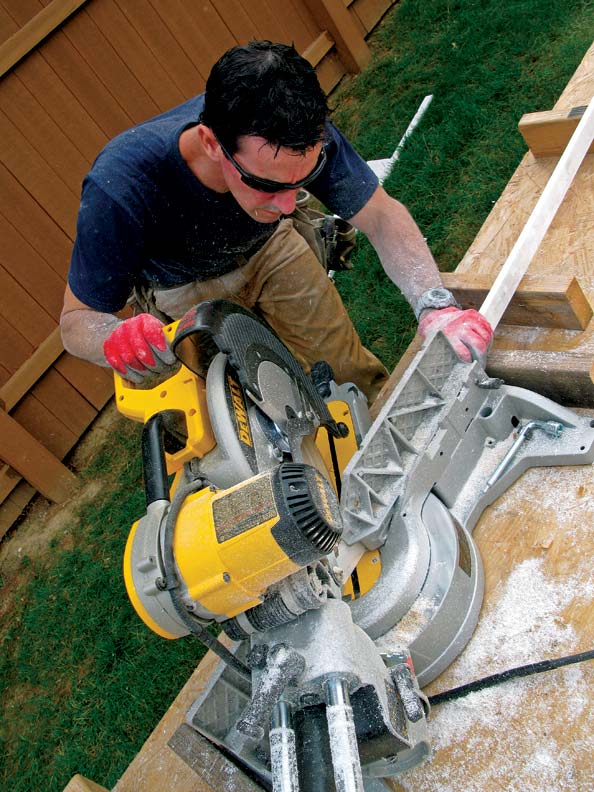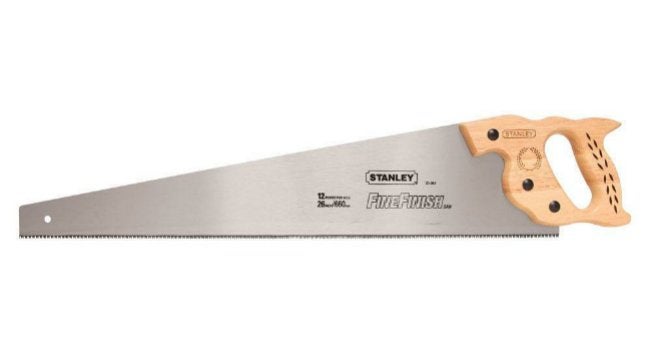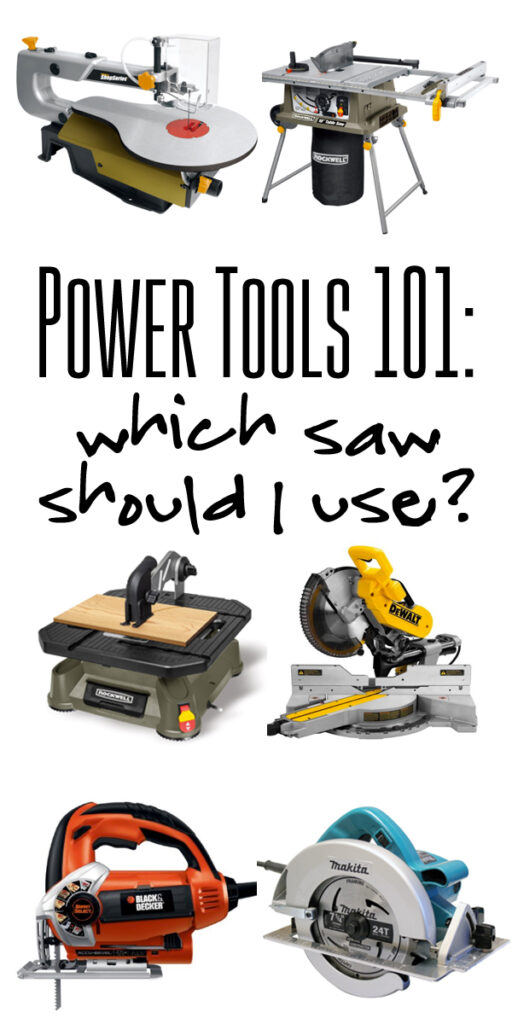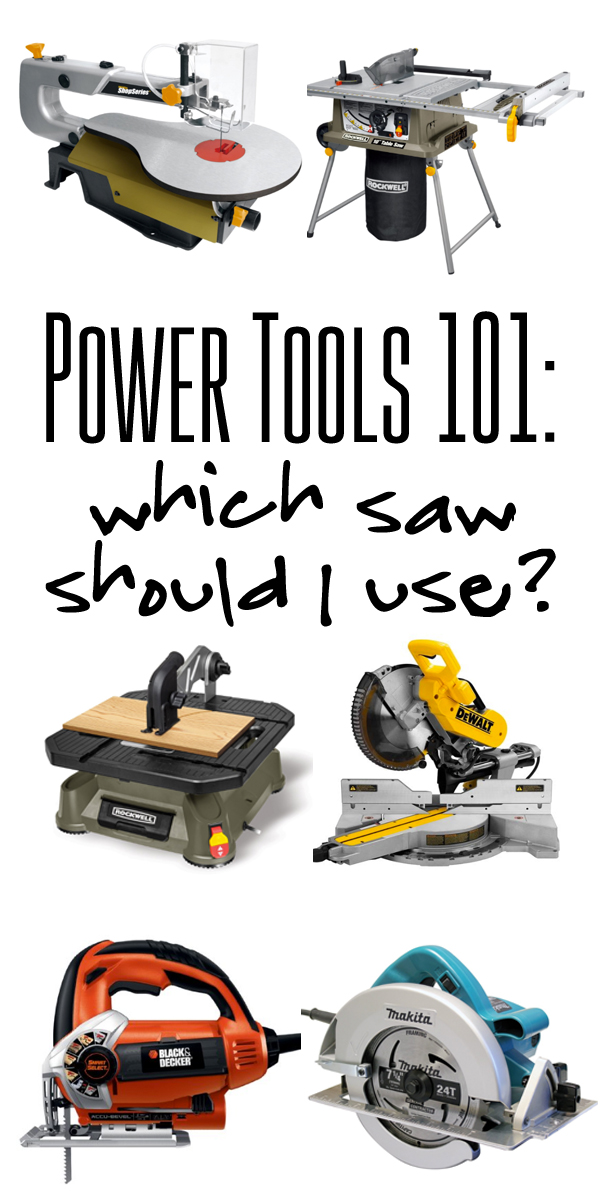If you’ve ever found yourself struggling with a saw, whether it’s during a home improvement project or a DIY adventure, then you know how frustrating it can be to use a tool that just doesn’t cooperate. But fear not, because we have the answer to your prayers: the Easiest Saw To Use. Designed with simplicity and user-friendliness in mind, this incredible tool will make your cutting tasks a breeze. Say goodbye to frustration and hello to efficiency – it’s time to discover the easiest saw you’ll ever use. If you’re new to woodworking or simply looking for a saw that is easy to handle, you may be wondering which type of saw is the easiest to use. With so many options available on the market, it can be overwhelming to choose the right one. In this article, we will explore different types of saws and evaluate their ease of use based on various factors. So, let’s dive in and find out which saw might be the perfect fit for you!

This image is property of www.oldhouseonline.com.
Different Types of Saws
Hand Saw
Let’s start with the classic hand saw. This traditional tool consists of a sharp blade with teeth, attached to a handle. Hand saws are versatile and suitable for a wide range of cutting tasks. They are ideal for making precise and controlled cuts in wood. The best part about hand saws is that they require no power source, making them portable and easy to use anywhere.
Circular Saw
Next up, we have the popular circular saw. As the name suggests, this saw utilizes a circular blade to make straight or beveled cuts through various materials, including wood, metal, and plastic. Circular saws are powered by electricity or battery, providing a significant boost in cutting efficiency. With their adjustable depth and angle settings, these saws offer great versatility and ease of use, especially for cutting large pieces of material.
Table Saw
If you’re working on larger projects or need to make precise and accurate cuts repeatedly, a table saw may be your best bet. Table saws consist of a flat table with a circular blade protruding from the center. They offer a stable work surface and come with various attachments for specialized cutting tasks. With their rip fence and miter gauge, table saws provide enhanced accuracy and control, making them a favorite among professionals.
Jigsaw
For intricate and curved cuts, a jigsaw is an excellent option. This handheld saw features a thin blade that moves up and down rapidly to cut through materials. Jigsaws are highly maneuverable and offer the flexibility to cut intricate shapes and patterns. They are a popular choice for woodworking, especially when it comes to cutting curves or irregular shapes.
Miter Saw
A miter saw is a specialized saw designed for making accurate crosscuts and miter cuts. This saw consists of a circular blade mounted on a pivoting arm, allowing you to cut at various angles and create precise mitered corners. Miter saws are commonly used in woodworking and trim work, making them an indispensable tool for craftsmen.
Reciprocating Saw
If you’re looking for a saw that can handle rough, aggressive cuts, a reciprocating saw might be the right choice for you. This powerful saw features a push-pull motion, allowing it to cut through various materials, including wood, metal, and plastic. Reciprocating saws are commonly used in demolition work and remodeling projects, thanks to their ability to tackle tough materials with ease.
Band Saw
A band saw is a versatile tool commonly used in woodworking and metalworking. It consists of a long, continuous blade that moves in a continuous loop between two pulleys. Band saws offer excellent precision and can make intricate cuts and curves. They are known for their ability to cut thick materials and are often used for resawing and ripping large pieces of wood.
Scroll Saw
If you’re into detailed and intricate woodworking projects, a scroll saw is worth considering. This specialized saw allows you to make precise, intricate cuts and patterns, thanks to its thin, reciprocating blade. Scroll saws are often used for crafting woodwork, making intricate designs, and creating decorative items.
Chainsaw
When it comes to cutting large logs or trees, a chainsaw is the go-to tool. Chainsaws are powerful saws with a chain wrapped around a bar, running on an engine or electric motor. They offer exceptional cutting speed and are widely used in forestry, tree removal, and construction projects. However, due to their power and aggressive cutting action, chainsaws require proper training and caution when using them.
Pole Saw
Lastly, we have the pole saw, which is essentially a chainsaw attached to a long pole or rod. This saw allows you to reach high branches or areas without the need for a ladder. Pole saws are often used for tree pruning and trimming, providing a safer alternative to climbing trees. They are generally lightweight and easy to maneuver, making them a convenient tool for maintaining your garden or landscape.
Considerations for Ease of Use
Now that we’ve explored the different types of saws, let’s discuss some key factors to consider when evaluating their ease of use:
Size and Weight
The size and weight of a saw can greatly impact its ease of use. Lighter and compact saws are generally easier to handle and maneuver, especially if you’re working on projects that require a lot of precision or have limited space.
Handle Design
The design and ergonomics of the handle play a significant role in how comfortable and easy it is to use the saw. Look for saws with handles that provide a secure grip and reduce hand fatigue during extended use.
Ergonomics
Along with the handle design, the overall ergonomics of the saw should be considered. A well-balanced and ergonomic saw can greatly enhance your comfort and control while using it, making your tasks easier and more enjoyable.
Blade Control
The ease of controlling the blade’s speed, depth, and angle can greatly influence the ease of use. Look for saws that offer smooth and precise blade control, allowing you to make accurate cuts effortlessly.
Safety Features
Safety should always be a top priority when working with any type of saw. Consider saws that come with safety features such as blade guards, electric brakes, and locking mechanisms to ensure your well-being while using the tool.
Ease of Blade Changes
Frequent blade changes may be required for different cutting tasks or materials. Saws that offer quick and easy blade changes can save you time and frustration, making your overall experience more convenient.
Power Source
The power source of the saw can affect its ease of use. Electric saws are generally more powerful and offer consistent performance, while battery-powered saws provide portability and flexibility. Choose the power source that best suits your needs and preferences.
Additional Features
Some saws come with additional features that can enhance their ease of use. For example, laser guides or LED lights can improve cutting accuracy, while dust extraction systems can keep your work area clean and visible.
Price
While price shouldn’t be the sole determining factor, it’s essential to consider your budget when selecting a saw. Finding the right balance between features, quality, and affordability is key to ensuring you get the most value for your investment.
User Experience
Lastly, consider the overall user experience. Read reviews and seek recommendations to gauge how user-friendly and enjoyable a particular saw is to use. Real-life experiences can provide valuable insights that may influence your decision.
With these considerations in mind, let’s evaluate the ease of use for each saw type we discussed earlier.
Hand Saw
Description
A hand saw is a manual cutting tool that features a long blade with sharp teeth, mounted on a handle. It is designed for precise and controlled cuts in various materials, including wood.
Pros
- Portable and requires no power source.
- Easy to control and maneuver due to its lightweight and compact design.
- Ideal for smaller cutting tasks and woodworking projects.
- Does not produce noise or vibrations like power saws.
Cons
- Requires physical effort and may cause fatigue during extended use.
- Limited to cutting straight lines and may not be suitable for intricate cuts or curves.
- Slower cutting speed compared to power saws.
Ease of Use
Hand saws are generally considered user-friendly due to their simplicity and ease of control. They are perfect for beginners or those who prefer a hands-on approach. However, the amount of effort required for sawing and the limited scope of cuts can be a deterrent for some users.
Circular Saw
Description
A circular saw is a power tool that consists of a circular blade mounted on a motor. It is designed for making straight or beveled cuts through various materials, including wood, metal, and plastic.
Pros
- Offers fast and efficient cutting.
- Versatile and can handle a wide range of materials and cutting tasks.
- Adjustable depth and angle settings provide flexibility.
- Suitable for both straight cuts and beveled cuts.
- Can easily cut through large pieces of material.
Cons
- Requires a power source and may be less portable than hand saws.
- Can be intimidating for beginners due to its power and potential kickback.
- Loud noise and vibrations during operation.
- Safety precautions, such as wearing protective gear, are necessary.
Ease of Use
Circular saws can be considered easy to use once you become familiar with their power and operation. The adjustable settings allow for versatility, and the ability to cut through large pieces of material makes it convenient for various projects. However, beginners may find it overwhelming initially, and proper safety precautions should always be followed.

This image is property of empire-s3-production.bobvila.com.
Table Saw
Description
A table saw is a stationary saw designed for making accurate and precise cuts. It consists of a flat table with a circular blade protruding from the center, guided by a rip fence and miter gauge for precise cutting.
Pros
- Provides stability and a controlled work surface.
- Perfect for making accurate and straight cuts consistently.
- Offers enhanced safety features, such as blade guards and push sticks.
- Suitable for cutting large pieces of material or repetitive cuts.
- Various attachments available for specialized cutting tasks.
Cons
- Requires a dedicated work area and may not be as portable as other saws.
- Can be expensive compared to handheld saws.
- Large size and heavy weight may limit maneuverability.
- Requires some level of expertise for proper use and maintenance.
Ease of Use
Table saws are generally favored by experienced woodworkers due to their precision and accuracy. With proper setup and safety measures, they offer excellent ease of use for repetitive or large-scale cutting tasks. However, beginners may find the initial setup and adjustment intimidating, and proper training is advised.
Jigsaw
Description
A jigsaw is a handheld saw with a thin, reciprocating blade that moves up and down rapidly. It is designed for making intricate and curved cuts in various materials, including wood, metal, and plastic.
Pros
- Highly maneuverable and perfect for cutting curves, shapes, and patterns.
- Versatile and suitable for both rough and fine cuts.
- Compact and lightweight design allows for easy handling.
- Ideal for woodworking projects that require precision and intricate detailing.
Cons
- May produce some vibrations during operation.
- Not as powerful as other saw types, making it less suitable for heavy-duty tasks.
- May require frequent blade changes for different materials or cutting styles.
Ease of Use
Jigsaws are generally considered user-friendly due to their maneuverability and versatility. They excel in making intricate cuts and are often a go-to tool for hobbyists and DIY enthusiasts. The lightweight design and ease of control make them suitable for users of all skill levels.

This image is property of empire-s3-production.bobvila.com.
Miter Saw
Description
A miter saw is a specialized saw designed for making accurate crosscuts and miter cuts. It features a circular blade mounted on a pivoting arm, allowing for angled cuts and precise mitered corners.
Pros
- Provides high accuracy and perfect for making precise cuts at various angles.
- Suitable for crosscuts, bevel cuts, and miter cuts.
- Offers adjustable stops for common angle settings.
- Can handle large pieces of material for deeper or wider cuts.
Cons
- Requires a dedicated work area and may not be portable for on-site projects.
- Limited to making straight or angled cuts and may not be suitable for curved cuts.
- May be cumbersome for beginners due to the need for angle adjustments.
Ease of Use
Miter saws are well-regarded for their ease of use when it comes to making precise cuts at various angles. The adjustable stops and clear indicators make it convenient for achieving accurate cuts repeatedly. However, beginners may find the angle adjustments and setup process slightly more complex compared to other saws.
Reciprocating Saw
Description
A reciprocating saw, also known as a sawzall, is a powerful tool utilized for rough and aggressive cuts. It features a push-pull motion and can cut through various materials, including wood, metal, and plastic.
Pros
- Offers high cutting speed and power for rough cuts and demolition work.
- Versatile and suitable for cutting materials in tight or hard-to-reach spaces.
- Can handle a wide range of materials, including metal and PVC pipes.
- Allows for controlled cutting with the right blade selection.
Cons
- May produce significant vibrations and noise during operation.
- Less suitable for precise or intricate cuts due to its aggressive cutting action.
- Requires proper handling and safety precautions, as it can cause kickback.
Ease of Use
Reciprocating saws are generally straightforward to use, thanks to their powerful cutting action and versatility. They are popular among contractors and DIY enthusiasts for rough cutting and demolition work. However, the aggressive cutting action may require some practice and caution, especially for beginners.

This image is property of hips.hearstapps.com.
Band Saw
Description
A band saw is a versatile saw commonly used in woodworking and metalworking. It consists of a long, continuous blade that moves in a loop between two pulleys, offering intricate cutting capabilities.
Pros
- Allows for intricate cuts and curves in both wood and metal.
- Suitable for resawing and ripping large pieces of material.
- Offers excellent precision and control.
- Can handle thick materials with ease.
Cons
- Requires a dedicated work area and may not be as portable as handheld saws.
- Needs proper setup and adjustments for precise cuts.
- May produce noise and requires proper safety precautions.
Ease of Use
Band saws require proper setup and adjustments to achieve precise cuts. However, once set up correctly, they offer excellent ease of use, especially when it comes to making intricate cuts and curves. Their precision and versatility make them popular among woodworkers and metalworkers alike.
Pole Saw
Description
A pole saw is a specialized saw attached to a long pole or rod, allowing users to reach high branches or areas without the need for a ladder. It is commonly used for tree pruning and trimming.
Pros
- Provides a safer alternative to climbing trees for cutting branches.
- Lightweight and easy to maneuver, thanks to the extended reach.
- Allows for controlled cutting at heights.
Cons
- Limited to cutting branches or materials at a distance.
- Less suitable for precise or heavy-duty cutting tasks.
- Requires some physical effort for extended use.
Ease of Use
Pole saws offer great ease of use, primarily due to their extended reach and lightweight design. They make tree pruning and trimming more accessible and safer without the need for ladders or climbing. However, they are limited in their application and may not be suitable for other types of cutting tasks.
In conclusion, different types of saws offer varying levels of ease of use depending on the task at hand and your level of expertise. Hand saws and jigsaws are generally considered beginner-friendly due to their simplicity and versatility. Circular saws, table saws, and miter saws offer precision and efficiency for more advanced users. Reciprocating saws, band saws, and chainsaws excel in rough, aggressive cutting tasks. Finally, pole saws provide a convenient solution for tree pruning at higher heights.
When choosing a saw that is easy to use, consider your specific needs, project requirements, and level of experience. By taking into account factors such as size and weight, handle design, ergonomics, blade control, safety features, ease of blade changes, power source, additional features, price, and user experience, you can make an informed decision and find the saw that best matches your needs. Remember to always prioritize safety and follow the manufacturer’s guidelines for proper use and maintenance. With the right saw in hand, your woodworking or cutting tasks will become a breeze!

This image is property of www.theshabbycreekcottage.com.
